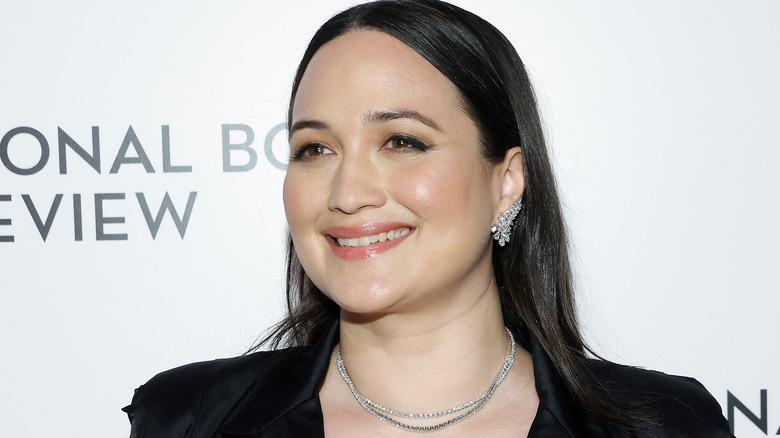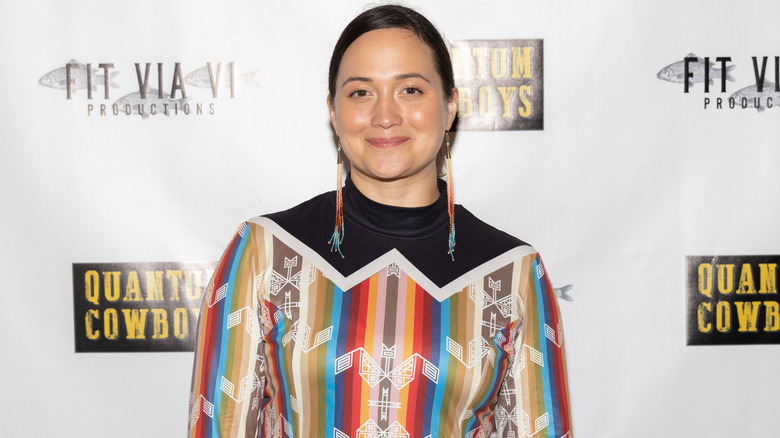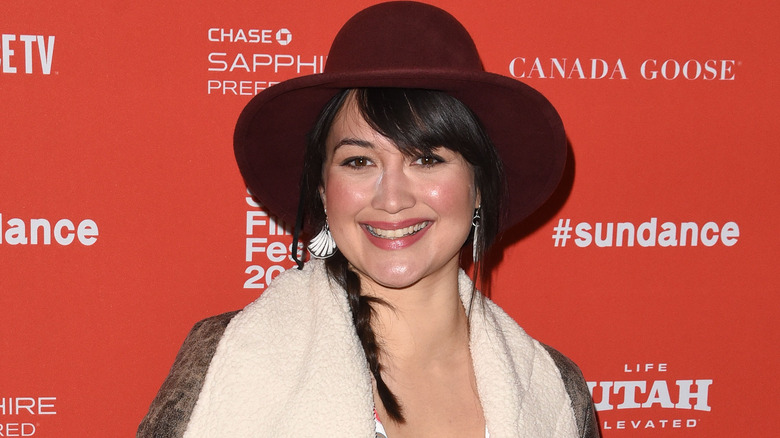What Lily Gladstone's Life Was Really Like Before Her Hollywood Fame
Lily Gladstone's performance in "Killers of the Flower Moon" earned her a Golden Globe for best actress and acclaim from the critics. But her journey to making history as the first Indigenous actor to take home the award was long. Martin Scorsese's Western drama marked the first lead role for Gladstone, who is in her late 30s. In fact, Gladstone's film debut was just a decade earlier, when she was tapped to play a minor role alongside Benicio del Toro in "Jimmy P: Psychotherapy of a Plains Indian" in 2012.
Gladstone went on to star in several other movies and TV shows, but the prospects of a breakthrough started to look improbable. "You just wonder if it's going to be sustainable," she told The Hollywood Reporter in 2023. Gladstone wasn't willing to wait. Already in her mid-30s, she decided she needed to change paths in 2021. "I had my credit card out, registering for a data analytics course," she said. Gladstone planned to work with the Department of Agriculture on tracking murder hornets.
Luckily for all movie fans, Gladstone decided to check the email she had just been notified about before paying for the course. The email was from Scorsese. The director wanted to schedule a Zoom conversation with Gladstone about a potential role, having become interested in her after seeing her performance in "Certain Women." Gladstone's life would never be the same. But the Golden Globe stage is as far a place can be from where Gladstone came from.
Lily Gladstone grew up on a reservation
Lily Gladstone grew up on the Blackfeet Reservation in Montana, more than 1,300 miles from the glitz and glamor of Hollywood. The daughter of a Blackfeet and Nez Perce father and a white mother, Gladstone experienced a bit of both worlds. Her father worked as a boilermaker while her mother was a school teacher. "It's a very normal, sort of working-class upbringing in one way, and in another way, I'm just a rez girl," she told The New York Times.
The family lived on whatever food commodities were available and her father's hunting. "My mom was off working to pay off grad school," she said in The Hollywood Reporter interview. As a child, Gladstone often found herself the target of jokes, something she attributes to her offbeat personality. "[I was] just that chubby mixed girl on the rez who had a little bit too much creative energy and not enough outlets," she said.
She did have one, though. But it only came to the reservation once a year. The Missoula Children's Theater was Gladstone's first stage, where she displayed her talents playing one of the stepsisters in "Cinderella." "It was the first time that I felt cool," she told Montanan. When she was 11, her parents relocated in search of opportunities. But she never left her heritage behind. "I am shaped by my community — and I have been supported in my ambition to be an actor and storyteller," she told The Guardian in 2017.
Lily Gladstone returned to the reservation to teach
The Blackfeet Reservation remained an important part of Lily Gladstone's life well after her family moved away from it. Gladstone majored in acting and minored in Native American studies at the University of Montana, where she was introduced to Augusto Boal's Theater of the Oppressed, a theatrical form that seeks to promote social change through acting. After graduating, Gladstone became inspired to apply what she had learned in her own community by offering workshops to the reservation youth.
"We would talk about the issues that affected us in our daily lives, and pull out key words: colonization, assimilation, family, home," she told Variety in November. The exercise involved the students using their bodies to express what each of the words meant to them. For "assimilation, for example, some got into the fetal position, while others covered their mouths or used their fingers to mimic scissors cutting through their long hairs.
Gladstone hopes her journey continues to inspire Indigenous children, to whom she dedicated her Golden Globe. "This is for every little rez kid, every little urban kid, every little Native kid who has a dream, who is seeing themselves represented and our stories told by ourselves in our own words," she said in her acceptance speech. Giving back to her people is also a way for Gladstone to pay back what they gave her. "The beautiful community, nation, that raised me, that encouraged me to keep going, keep doing this," she reflected.



